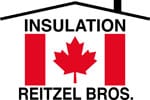-
Call Us: 613-385-1109
Cellulose vs. Fibreglass Insulation
Two of the leading insulation products used are cellulose and fibreglass.
Cellulose insulation consists of 85% recycled paper with borates added as a fire retardant. Fibreglass consists of plastics with tiny glass fibres added to give it strength.
Both insulation types will improve the energy efficiency of your building but in different ways.
Over the years we have become a leader in cellulose fibre installation. We appreciate that the performance of the product is as superior as our services.
Cellulose Fibre Insulation vs. Fibreglass Insulation
Cellulose Fibre Insulation
Cellulose is produced from recycled paper and borates. Borates are fire retardant and comprised of two types of chemicals: borax and boric acid.
These are the same chemicals commonly found in day-to-day items such as beauty products, laundry soap and fertilizers.
The use of cellulose fibre is rapidly growing because it is eco-friendly nature.
Cellulose is a loose-fill, fibrous insulation made from selected paper stock. Each bag displays Environment Canada's “Ecologo", classifying it as an “environmentally friendly" product.
Cellulose may be hand poured or applied using a blowing machine. Machine application ensures that the cellulose is properly conditioned and placed at the required design density.
The great advantage of cellulose is that it forms itself to whatever cavity it is injected into. This enables it to fill the closed cavity with the most consistency and does not allow any voids.
Cellulose is a paper product and derives its thermal value from the density of the product, which means less air movement.
The product is quick and easy to install but offers more thermal value than fibreglass.
Fibreglass Insulation
Glass fibre is comprised of sand, boron, phenol formaldehyde and a percentage of recycled glass product.
Glass fibre batt is the most widely used type of insulation by contractors because it is cost-effective nature.
Major manufacturers are making formaldehyde-free fibreglass insulation which makes it more environmentally friendly but significantly less than cellulose fibre.
Typically it is installed in formed batts for the walls and loose fill for the attic. If not installed properly the product can leave voids, which cause air gaps leading to increased heating/cooling costs.
Loose fill product is made from the same material as batts but is left in its fibrous state and must be blown-in using a machine and delivery hose.
Glass fibre is fire retardant by nature and will not rot or decay over time but will melt when exposed to flame.
The product is quick and easy to install but offers less thermal value than cellulose.
Glass fibre derives its thermal value from the air, which it traps within its fibres.
